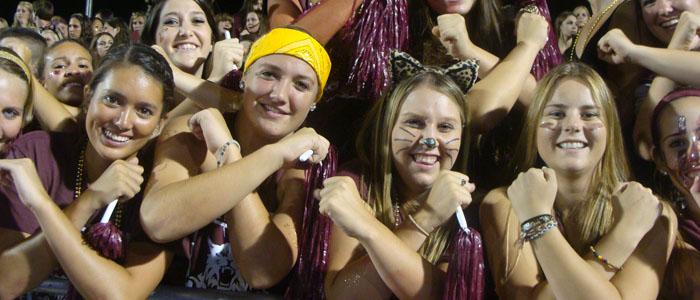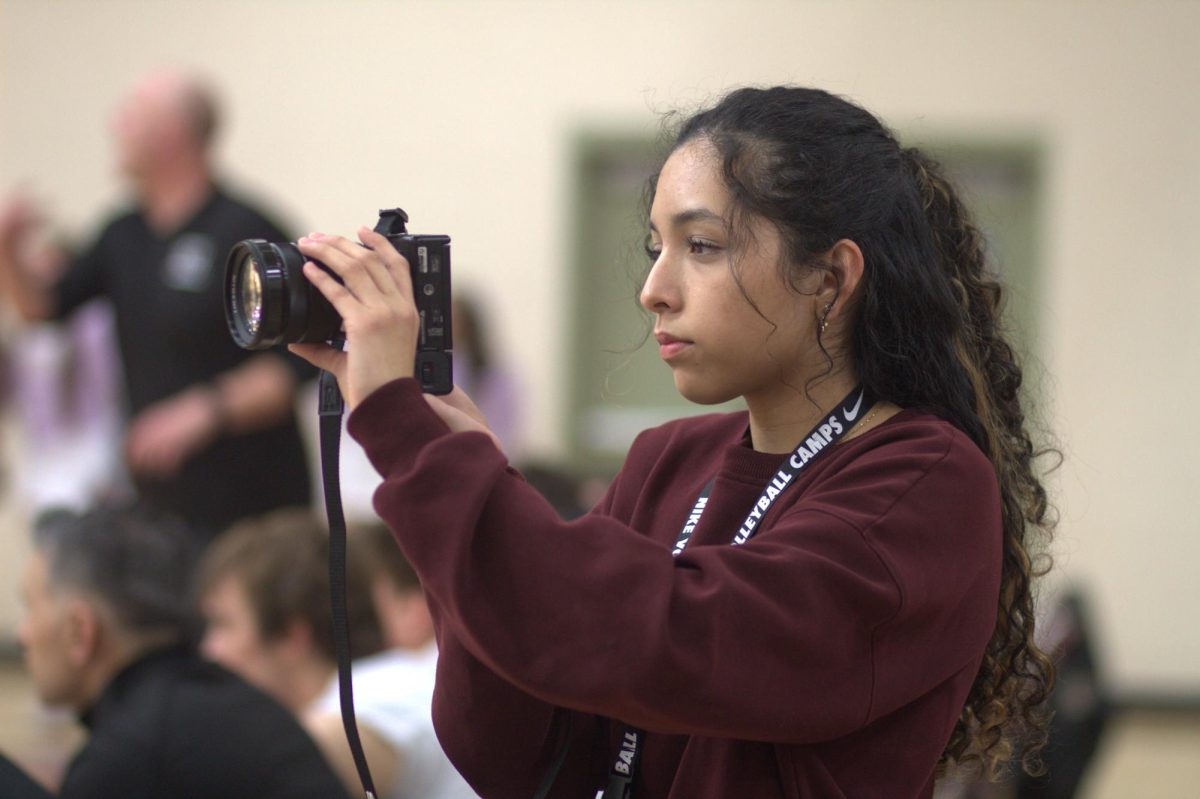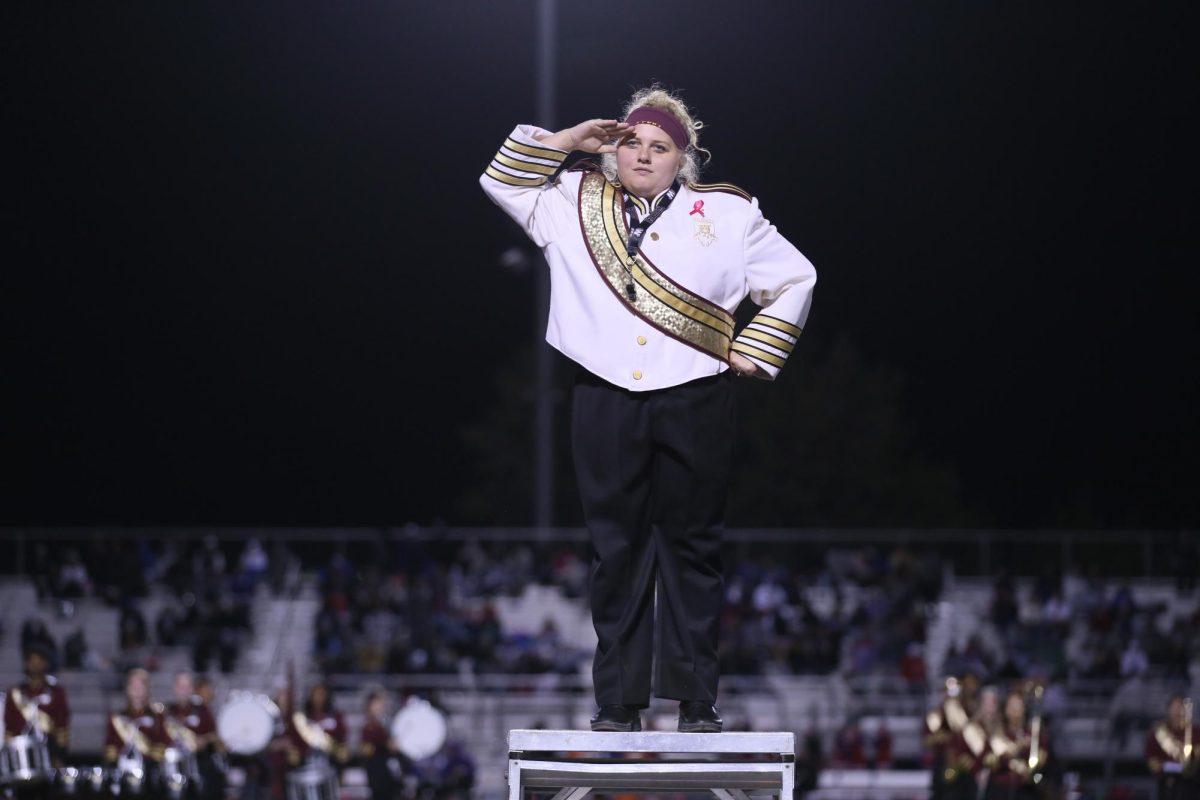
This story originally ran in the September issue of The Roar.
Cheers reverberate through the night air, as thousands of fans pack the stadium until it can hold no more. Bright lights illuminate two massive crowds, one a mass of blue and silver, another swathed in maroon and gold. It’s the Quarry Bowl, one of the few nights in the year that the rivalry that splits this town, the competition between this school and Rocklin High comes to light in its most public way. Yet, despite the competition during this event, rivalries tend to lessen off the football field.
PJ Floyd, whose brother William chose to go to Rocklin to be with his friends, has experienced this firsthand.
“We smack talk each other sometimes, but we don’t really take (the rivalry) very seriously,” Floyd said. “When (my brother) played for Rocklin’s freshman team against Whitney in the Quarry Bowl, I rooted for him, but I supported Whitney’s JV and varsity teams.”
But looking past the occasional competition between the schools, it becomes clear that true differences exist between the two.
The differences between the schools begin at their very foundations. Whitney, with an enrollment of 1,901 students that barely outstrips Rocklin’s 1,864 students, is the larger school, with 194,000 square feet of building area compared to Rocklin’s 188,000. Differences in building size can be attributed to the almost 14 year gap between the construction of both facilities.
“(Rocklin High School) was constructed 20 years ago when the community was much smaller,” Sue Wesselius, senior director of facilities and operations at the Rocklin Unified School District, said. “(Whitney High) was opened a little over seven years ago, so the gyms and libraries are slightly larger at Whitney than at Rocklin.”
Further differences become apparent when usage of campus facilities are compared. Though both schools encompass approximately 50 acres of land, spaces on campus are divided up differently between the two schools, a disparity that becomes clear when the student parking lots are compared. Unlike Whitney, where seniors are given the opportunity to purchase parking spots for the whole school year, Rocklin’s seniors are reserved an entire lot.
“Seniors get to park in the parking spaces closest to the school, (and) there are no specific areas for (individual) students. It’s more like a first come, first serve type of thing,” class of 2012 graduate Stephanie Nguyen, said.
Despite differences between the two campuses, efforts have been made to ensure both schools provide similar learning environments and facilities.
“While Whitney’s pool is slightly larger, Rocklin has two pools, (and) both sites now have synthetic turf stadiums with rubber tracks. Whitney and Rocklin have distinctive exterior finishes and have a very different appearance, but overall both sites provide the same opportunities for students to achieve,” Wesselius said.
More so than the basic differences between the two campuses, academics help truly contrast the two schools. According to the 2011 School Profiles of both campuses, Rocklin leads Whitney in API (Academic Performance Index) scores, with a score of 881 compared to Whitney’s 867, making Rocklin the highest ranked school in Placer County, with Whitney following in second place. Rocklin has 20 AP courses to Whitney’s 16, offering AP classes like Physics CE and CM, Music Theory, Computer Science, and Studio Art 2D Design, all of which are not offered at Whitney. AP exam scores also differ between the schools, with 80% of students receiving a three or better at Rocklin as compared to 59% at Whitney.
When looking beyond the numbers, fundamental differences arise between the makeups of the two schools.
“Rocklin is a more project-oriented school, whereas Whitney is more (standardized) test oriented, in response to the CSTs,” Mr. Jon Bryant, who taught geography at Rocklin and currently teaches AP World History here, said. “Rocklin also has more traditions, like the Twenties Bash, which was a party for the different U.S. History classes.”
The schools, particularly when Whitney was first established, also differed in their commitment to Professional Learning Community (PLC) standards that ensure that all students, regardless of their different teachers, learn the same material and are graded in a similar manner.
“Whitney is more tightly aligned (with PLC standards) that Rocklin was when I was teaching there,” Mrs. Amanda Bannister, who taught Language Arts I and II for five years at Rocklin before coming to Whitney, said, “but both schools still strive to have common units and standards.”
Daily schedules also differ between campuses, and, though ideas have been shared in the past on how school days should be planned, each school has a very different take on how to best help students. Intervention, the 25 minute time period in which students can clear essential skills and finish extra work, was the model for Rocklin’s 30 minute plus period, though Rocklin has developed plus period into something far removed from Whitney’s system.
“Each day, students attend plus period for one (designated) class out of their eight classes, and if they are passing (that particular) class, they can leave, but if not, they must stay,” Bryant said. “Plus period has received good reviews, but Whitney has a loyalty to the intervention system.”
As students finish their senior year at either school, the processes for honoring top graduates also highlights the differences between the schools. Whitney’s Distinguished Scholar Diploma, awarded to a select few graduates who show leadership and academic excellence, is less specific than Rocklin’s advanced diplomas, which award excellence in different areas.
“Rocklin awards advanced diplomas for individuals who have excelled in (academics, student leadership, and campus involvement) and who have met certain requirements. Students can also select an emphasis in a particular department or can choose an area of study to be recognized for,” Emily Leonhardt, a Rocklin senior, said.
The two schools also emphasize different qualities in their graduates.
“At Rocklin, all of the students thought they would go to college, when, in reality, that probably wouldn’t happen to everyone. At Whitney, our students leave as more well rounded individuals, since we have more hands-on tech classes, which gear some students toward trades,” Mr. Alek Ustaszewski, who helped open both schools, said.
Further differences are apparent when the ASB programs of the schools are compared. Unlike Whitney’s rallies, in which activities are mainly student led, Rocklin’s rallies include greater staff involvement.
“While our ASB director is more behind the scenes, Mr. Thompson, (Rocklin’s ASB director) was the central figure of their rallies. He would hold up a thunderbolt called a thunder stick to lead the cheering, and when he held it vertically students would cheer, and when he pointed it horizontally, they would stop. ” Bannister said.
School spirit also highlights differences between the campuses.
“The student body (at Rocklin) is not as spirited as a whole compared to Whitney, since not as many people dress up or go to games and support our teams,” Rocklin student Suzie Bigley said.
Athletics further expose the differences between the schools, with Whitney’s teams mainly competing in Division II sports, while Rocklin’s teams are in Division I. Both schools are known for different sports as well. Whitney’s football and softball teams have been most successful, winning playoffs the greatest number of times compared to all other school sports teams, and winning the greatest number of league titles. Rocklin, however, focuses on different sports.
“Our baseball, girls’ volleyball, and boys’ basketball teams have been most successful,” Rocklin’s athletics director Mr. Davis Stewart said, “with the varsity baseball team playing at section finals for the six out of the last seven years, and the girls volleyball team winning four league titles in a row. The boys’ basketball team has also had great success, winning the Northern California championships and playing for state championships in 2009.”
Despite different areas of focus, both athletic programs try to maintain some similarities across the district.
“Both programs have similar rules and we both use the same athletic code of conduct to ensure that we are consistant as a district,” Stewart said.
Though common areas between the the two athletic programs exist, they are far fewer than during the first years Whitney was open. To reduce Rocklin’s heavily impacted population, at around 2,800 students, students were given the choice to come to Whitney, and having athletic teams made up of students from another high school made it difficult for Whitney’s teams to establish themselves at first.
“Most of the students (on the first Whitney football team) were from Rocklin, and it was hard to break that cult and create our own traditions,” Mr. Paul Hanks, assistant coach to the varsity team, said. “When they would come to practice wearing blue clothes, we would get angry, since we wanted to establish our own identity. We made it a point to make blue an evil color.”
This desire for independence from Rocklin has continued years after Whitney’s founding, and still affects both schools.
“The need for our own identity has kept Whitney from joining with Rocklin in the past, though we are uniting to some extent through things like the trip (students from both schools took) to China and through the 4WRD dance show,” Bryant said. “We’re getting to the point where we are now peer schools, and we can start to collaborate more and learn from each other.”
by KAVYA PATHAK





